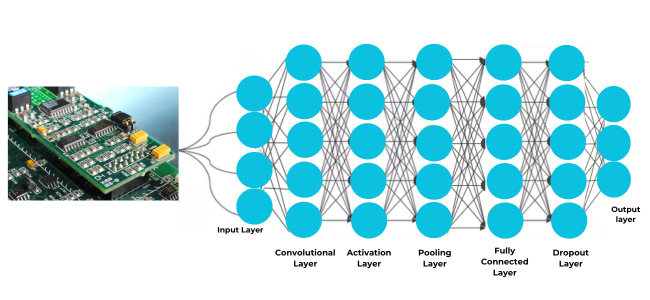What is CNN for image processing?
Published Sep 02, 2024
Understanding Convolutional Neural Networks (CNNs)
Convolutional Neural Networks (CNNs) are a class of deep learning algorithms primarily used for processing structured grid data such as images. They have proven to be highly effective for tasks like image classification, object detection, and segmentation. CNNs have become a cornerstone in the field of computer vision, powering applications in various domains including healthcare, autonomous driving, and facial recognition.
What is CNN?
A Convolutional Neural Network is a type of artificial neural network designed to recognize patterns in data through hierarchical learning. CNNs are particularly adept at handling image data due to their unique architecture, which consists of several key layers:
- Convolutional Layer: This layer applies a set of filters (also called kernels) to the input image, producing a set of feature maps. Each filter detects a specific feature such as edges, textures, or patterns.
- Activation Layer: Typically, a non-linear activation function like ReLU (Rectified Linear Unit) is applied to introduce non-linearity into the model, allowing it to learn more complex patterns.
- Pooling Layer: This layer performs downsampling (e.g., max pooling or average pooling) to reduce the spatial dimensions of the feature maps, retaining essential information while reducing computational load.
- Fully Connected Layer: These layers are used towards the end of the network to make predictions. They take the flattened feature maps and pass them through one or more dense layers to produce the final output.
- Dropout Layer: To prevent overfitting, dropout layers randomly deactivate a fraction of neurons during training, ensuring the network generalizes well to new data.

How CNNs Work
CNNs process input images through a series of convolutional, activation, and pooling layers to extract hierarchical features. Initially, low-level features like edges are detected, and as the data moves deeper into the network, higher-level features like shapes and objects are recognized. This hierarchical feature extraction makes CNNs highly effective for image-related tasks.
Example of CNN Architecture
Here’s a simple example of a CNN architecture using Keras:
import tensorflow as tf
from tensorflow.keras import layers, models
# Define the CNN model
model = models.Sequential()
model.add(layers.Conv2D(32, (3, 3), activation='relu', input_shape=(64, 64, 3)))
model.add(layers.MaxPooling2D((2, 2)))
model.add(layers.Conv2D(64, (3, 3), activation='relu'))
model.add(layers.MaxPooling2D((2, 2)))
model.add(layers.Conv2D(64, (3, 3), activation='relu'))
# Add fully connected layers
model.add(layers.Flatten())
model.add(layers.Dense(64, activation='relu'))
model.add(layers.Dense(10, activation='softmax'))
# Compile the model
model.compile(optimizer='adam',
loss='sparse_categorical_crossentropy',
metrics=['accuracy'])
# Summary of the model
model.summary()
# Train the model (using a hypothetical dataset)
# model.fit(train_images, train_labels, epochs=10, validation_data=(val_images, val_labels))
Convolutional Neural Networks (CNNs) are a fundamental tool in modern AI, particularly for image processing tasks. By leveraging powerful architectures and vast computational resources, CNNs can achieve remarkable accuracy and efficiency. Understanding the essential components, techniques, and resources for training CNN models is crucial for anyone looking to harness the power of deep learning for computer vision applications. With the right data, tools, and infrastructure, developing robust and effective CNN models becomes a structured and achievable process.


